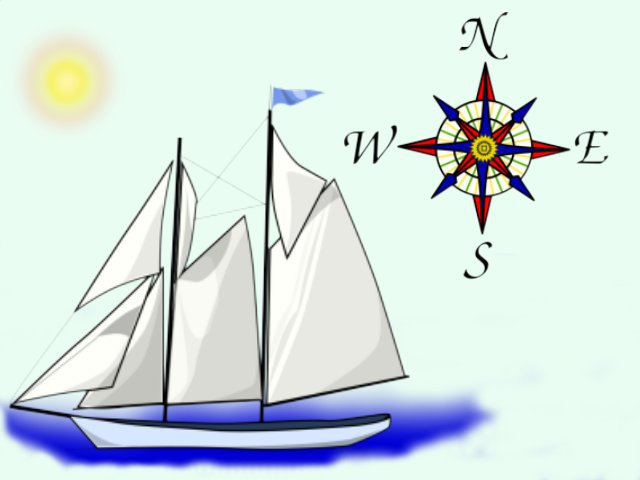Search results
Donating Genealogical Records
June 28, 2012 by ramona
Filed under Articles, Latest News, Preserving Your Family Tree
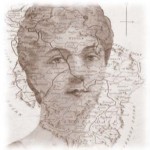 Have no doubt that your family tree research has value beyond the current generations of your own family.
Have no doubt that your family tree research has value beyond the current generations of your own family.
Donating your family history to a local historical or genealogy group is an excellent way to make certain all of your hard work is put to good use. Local Historical Societies and Genealogy groups have a stake in preserving your records for future generations.
How to Donate Your Family Tree
If you are considering donating your family tree research the best place to start is by contacting your local library. Your local library can help you identify the archives that are best geographically suited to receive your family’s story.
Generally, community groups are interested in local reference records. However, they may have ties to other groups with broader interests such as provincial or state archives.
When donating a rather widespread family tree it may be worth considering breaking it into smaller portions focusing on specific locations.
While it is normal in a large family tree to have a significant geographical spread with ancestors coming from all corners of the globe, a local group may have limited space. Therefore, it is reasonable that they may not want to house large documents unless they are completely location specific.
What to Include with Your Donation
Along with your family tree templates or pedigree charts, you should include either originals or copies of:
- Primary and secondary source documents
- Old photos
- Vital Records
- Newspaper clippings
- Maps
Donating your family tree data is one of the best ways of sharing your genealogy and contributing to the preservation of history in your community. Not only does it help preserve your research for future generations it may be key to helping another family history researcher to break down a brick wall.
However, before you donate be sure not to part with any original items you or other members of your family may want to keep. Lastly, make certain that all of your research conforms to The Big Five Genealogy Standards and Guidelines.
To learn more about genealogical standards sign up today for Genealogy Beginner’s 30-day free trial and receive Eight, Step-by-Step Weekly Lessons You Can Do At Your Own Pace. Starting with Lesson 1: Genealogy Standards And Guidelines.
Ancestors in Debtor’s Prison
June 26, 2012 by ramona
Filed under Articles, Genealogy Institutional Records, Genealogy Records 101, Latest News
Prior to 1 869 in Great Britain, individuals who acquired debt could be sent to jail until their debts were paid in full. For many this could be a life sentence, not only for the insolvent individual but also for their entire family.
869 in Great Britain, individuals who acquired debt could be sent to jail until their debts were paid in full. For many this could be a life sentence, not only for the insolvent individual but also for their entire family.
As life without the main provider would most often mean severe poverty for the family of a debtor, entire communities began to spring up inside of debtor’s prisons resulting in children being born and raised inside them.
In the poignant story “Little Dorrit”, Charles Dickens delves into the lives of a family living in debtor’s prison. His inspiration for the tale is rooted in his own experiences, as Dickens own father was sent to debtor’s prison in 1824 for a debt of 40 pounds. Shortly after his incarceration, the rest of the Dickens family with the exception of Charles who at the tender age of 12 was employed and earning money to support his family joined John Dickens.
Although life in debtor’s prison was a harsh existence, there were allowances for debtors living in prisons with their families. A debtor with a little money would be able to pay for freedoms that might allow a prisoner to conduct business and receive social calls. A practice known as ‘Liberty of the Rules’ even allowed some prisoners to live a short distance outside the prison walls.
Debtor’s Prison Genealogy Records
Your best source of British records for finding information on insolvent ancestors in a debtor’s prison is at the British National Archives. This family tree search will take a great deal of patience as the records are not indexed and offer little detail.
Records held in this collection include:
· Registers and indexes of people served with petitions for bankruptcy (1884-1923)
· Bankruptcy case files (c.1759-c.1979)
· Records of Fleet Prison, Marshalsea Prison, Kings Bench Prison and Queens Prison (1628-1862)
· Registers of documents filed in bankruptcy proceedings (1733-1925)
For a quick online search findmypast has a bankrupt directory for 1820-1843 that includes details of all bankruptcies documented in The London Gazette for the period.
Forces War Records
June 23, 2012 by ramona
Filed under Articles, Genealogy Military Records, Genealogy Records 101, Latest News
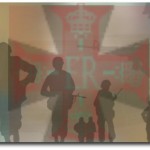 If you are searching for ancestors who served in the British Military Forces, you may want to check out Forces War Records; a new genealogy site that looks to be one of the best-organized search sites of its kind on the net.
If you are searching for ancestors who served in the British Military Forces, you may want to check out Forces War Records; a new genealogy site that looks to be one of the best-organized search sites of its kind on the net.
Forces War Records has over four million records for British Armed Forces personnel.
However, what makes this site special for family tree researchers is its search system. The records are cross-matched with bases, and regiments as well as Ships of the British Armed Forces, providing a usage that is easy to apply, accurate and time saving.
|
The Records Include
|
|
|
World War One World War Two Crimean War Databases Boer War Databases African Wars Databases Indian Mutiny Databases Napoleonic Wars Databases Medal Rolls |
Individual Battle Data Other Wars Casualty Lists Prisoner of War Records Royal Marines Databases Fighter and Bomber Command Losses Fleet Air Arm Data RFC/RAF List RN Losses |
|
Shot at Dawn Database and more !!!
|
|
The site has many cool features including:
- A free search for WWII POWs with information that lists
- Name
- Rank
- Service Number
- Regiment
- POW number
- Camp type/number and location plus notes.
- A free medieval search with search tips
- A community forum
- Tutorials
- A “Memories” section where you can record your own or read stories left by other members.
- Genes Magazine: an online journal that gives access to How to and historical articles.
Some other aspects of the site include the ability to save your searches and bookmark pages to your profile. Of course, registration is required to use the site and there is a reasonable fee for full access to records. Although the fees are reasonable, prospective users should be aware that they are in pounds sterling.
Before you get started on your search at Forces War Records, be sure to download Genealogy Beginners Military Research Tracking Form, available with your 30-day free trial membership.
Politics and Genealogy
June 20, 2012 by ramona
Filed under Articles, Latest News
 For most people genealogy is an enjoyable pastime, a pursuit of our heritage that helps to answer questions about why we are the way we are and how we got here.
For most people genealogy is an enjoyable pastime, a pursuit of our heritage that helps to answer questions about why we are the way we are and how we got here.
However, when it comes to politics and the genealogies of politicians it seems the stakes of knowing your line of decent are a little higher.
Political Family Trees and the Media
The spin that is put on the importance of a politician’s family tree sometimes defies reason. Certainly, it is understandable that the personal history of political candidates should have some bearing. After all the voting public has a right to know just who they are placing in a position of leadership.
Yet it seems curious that the cultural history or ethnicity of a perspective leader’s ancestors should create such media buzz, much less hold sway with the voting public.
Family History Headlines
From the time 35th President of the United States, John F. Kennedy’s Irish decent came into the
spotlight in 1963; genealogy has played a role in politics. 

A great example of this type of speculative Genealogy-gone-wild is the media frenzy surrounding President Barak Obama’s family history. During his campaign and following his 2008 election, countless stories of the president’s ancestors made it onto the pages of distinguished publications, such as the New York Times.
More recently, the news has been filled with a different type of genealogy story and controversy is at the heart of it with genealogists coming out of the woodwork to contest the family tree claims of political hopefuls.
The latest political family tree to come under scrutiny is that of senatorial candidate Elizabeth Warren whose claim to Native American ancestry is being challenged by the Cherokee Nation, the United Keetoowah Band of Cherokee Indians, and the Eastern Band of Cherokee Indians along with Cherokee genealogist Twila Barnes.

Barnes know for her genealogy blog “Polly’s Granddaughter” is a notorious “Wannabe Hunter” who strongly discourages any and all from making claims to Cherokee heritage without first producing the documentation to prove it.
It seems that genealogy and politics has clearly developed a love hate relationship and while it is, being determined if “politics is in the blood”; votes may hang in the balance.
Family Tree Webinar News
June 18, 2012 by ramona
Filed under Articles, Latest News
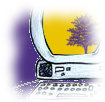 Are you yearning to discover the details about the newest genealogy technology or become skilled at digging up old records?
Are you yearning to discover the details about the newest genealogy technology or become skilled at digging up old records?
June is jam packed with great webinars for family tree enthusiasts. Whether you are a beginning genealogist or seasoned professional, you are going to love this month’s line up of webinars across the net.
June Webinars:
|
Date/ Time |
Subject |
Website/ REGISTER: |
| June 2021:00 – 22:00 | Genealogy Hacks: Tricks to Crack the Top Genealogy Web SitesWith Rick Crume | REGISTER: https://www1.gotomeeting.com/register/586250704 |
| June 2014:00 – 15:30 | Marriages and Anniversaries. Mining newspapers for engagements, marriages, anniversaries, and divorce records.With Thomas J. Kemp | Legacy Family Tree |
| June 2114:00 – 15:30 | Mapping Your Ancestors’ FootstepsWith Kathryn Lake Hogan | https://www3.gotomeeting.com/register/415630494 |
| June 2214:00 – 15:30 | Staying Safe with Social Media.With Thomas MacEntee | Legacy Family Tree |
| June 2521:00 – 22:30 | WordPress Part 2: Dissecting the DashboardWith Taneya Koonce | REGISTER: https://www1.gotomeeting.com/register/547184313 |
| June 2714:00 – 15:30 | Digital Images for Genealogists and Technologists: scanning, digitizing, editing, and preserving your photos.With Geoff Rasmussen | Legacy Family Tree |
Before you sign on remember to:
· Check that you have all of the system requirements
· Register (if needed)
· Download any required software
· Mute your Mic
· Log in Early
After you have been inspired and motivated check back with Genealogy Beginner and make sure, you are stocked up on Family Tree Charts and Research Tracking forms.
Available with your Genealogy Beginner Starter Kit when you register for a 30 Day Free Trial.
Searching for Immigrant Ancestors
June 16, 2012 by ramona
Filed under Articles, Getting Started in Genealogy, Introduction to Genealogy, Latest News
 Unless you are of aboriginal descent, your ancestors came to North America as immigrants.
Unless you are of aboriginal descent, your ancestors came to North America as immigrants.
Europeans have been making the journey to North American shores since the first recorded settlement by Vikings in L’Anse aux Meadows (Newfoundland, Canada) in 1000 AD. Although colonization truly did not begin until 1492 when Columbus headed his Spanish expedition in search of trade routes and instead found a new land.
In the following centuries, the North American population grew with immigrants of all races and nationalities. From those seeking religious freedoms to those who suffered forced immigration. They came by ship in droves and ever since, we have been looking back, seeking our immigrant ancestors.
The Immigration Brick Wall
For many beginning genealogists this is the point where they first encounter a brick wall in their research. Up to this point, the search for records has been confined to home shores and filling out the spaces on family tree charts has gone relatively smoothly. Then all of a sudden your ancestors disappear from the records… and you do not know where they went.
This is often the point in family history research where new researchers first come across an immigrant ancestor. Unless family bibles and/or stories offer a clue, it leaves researchers asking the questions. Where do I look now, who am I looking for and when did they emigrate?
Immigration and Name Changes
Before you can know where and when to look you will need to know who it is you are looking for. This may sound like a silly statement however; it is not unusual for immigrant ancestors to change their names. Name changes happened for a multitude of reasons from letter combinations and symbols that were not compatible with the English language to a desire to sound more American.
For example, you may have found a family patriarch listed in North American records as John Weaver but if he emigrated from Germany, you may actually need to be searching for Johan Webber.
Where to Begin Your Search
If the ancestor you are hunting for came from overseas, you may not have a birth or marriage record to answer the question of where they came from. Three excellent sources to consult should this be the case are:
- Census Records (which could also give you a clue as to when they emigrated)
- Death Records (if country of birth is not listed the names of listed parent could offer a clue)
- Newspapers (Wedding and anniversary announcements in addition to obituaries often contain biographical information that could aid in pinpointing your ancestors country or birth)
When Did They Emigrate
Your best starting point for unearthing the date of your ancestors emigration is the census records. The first census for the United States was taken before the ratification of the American Constitution in 1790. Since then a Census was taken every ten years.
In Canada, the first census occurred in 1666 in what was then New France. However, the first national census was not taken until 1871 and was followed by subsequent enumerations every five years. Locating the first census your ancestor was found in should help narrow down your search for an emigration year.
Once you have the data your next step is to begin locating records of immigration and ships lists. A visit to Library and Archives Canada or the US National Archives should be your first stop, as they will direct you to further research sources.
Do not forget to sign up for a 30-day free trial membership to Genealogy Beginner and download your complimentary family tree charts and research tracking forms.
The Grave Humor of Genealogy
June 12, 2012 by ramona
Filed under Articles, Genealogy Cemetery Searches, Latest News
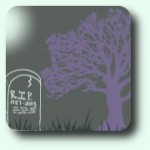 Genealogists have long used cemeteries as a source for finding ancestors in their family trees. Burial grounds are a repository of the history of people, they record lives lived and commemorate deaths.
Genealogists have long used cemeteries as a source for finding ancestors in their family trees. Burial grounds are a repository of the history of people, they record lives lived and commemorate deaths.
They are frequently filled with beautiful statuary, touching memorials and every so often …humorous remembrances.
Genealogy Fun
When doing a graveyard search, humor is not likely the first thing most genealogists and family historians have on their minds; the graveyard is a solemn place. However, if you stick with this hobby long enough you may run across some extremely entertaining memorials such as the following.
- Written on the gravestone for talk show host Merve Griffin:
“I will not be right back after these messages.”
- On the memorial of Mel Blank, famous for the voices of the Cartoon series Looney Tunes.
“That’s All Folks”
- Written on a tombstone in Thurmont MD:
“Here lies an Atheist. All dressed up and no place to go.”
- On the memorial of a certain Mr. Cook:
“Ma loves Pa- Pa loves Women. Ma caught Pa with 2 in swimming. Here lies Pa.”
- On a 1905 Gravestone:
“I told you I was Sick”
- On the grave marker for Robert Clay Allison (1840-1887):
“He never killed a man who did not need killing.”
- On the Grave of Anna Wallace:
“The children of Israel wanted bread, And the Lord sent them manna,
Old clerk Wallace wanted a wife, And the Devil sent him Anna.”
- On a stone from Burlington Vt.:
“She lived with her husband fifty years, And died in the confident hope of a better life.”
Another great tool for your cemetery searches is a Cemetery Visit tracking form. Get yours free with a Genealogy Beginner 30 Day Free Trial.
Preserving Family History: The Creative Family Tree
June 1, 2012 by ramona
Filed under Articles, Family History, Latest News, Preserving Your Family Tree
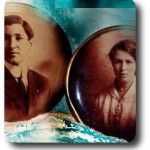 Genealogists and Family Historians are coming up with some wonderfully creative ways to document and share family trees. From video documentary to fine art pieces, the ways we are honoring our ancestors is becoming more and more creative.
Genealogists and Family Historians are coming up with some wonderfully creative ways to document and share family trees. From video documentary to fine art pieces, the ways we are honoring our ancestors is becoming more and more creative.
Video Documentary Family Tree
Documenting your family tree can become a visual auditory experience with the help of a company called Reel Tributes.
The inspiration for the company came with the passing of founder David Adelman’s Grandmother Eunice. Wanting to express her story, Adelman and his mother put together a video that documented their family history. The film tracked their family through photographs and stories beginning in 19th century Russia to their current life in San Francisco.
Emotionally powerful, the film created such a strong response that it motivated Adelman to start the company. Reel Tributes provides a way for families to memorialize their histories in a distinctive format.
As part of their service, Reel Tributes uses:
- Interviews
- Home videos
- Photographs
- Archival footage
Set to music and narrated throughout, the TV quality documentary films produce an overall effect that is eloquent and compelling.
Facebook Family History Book
As of 2011, Facebook had over 5 million users that is one in every 13 people. It is no small surprise that more and more family historians are using the social network to pay homage to their ancestors.
The new timeline has a beautiful display that allows families to come together and share information in real time; no matter how distance may separate them. Taken as a whole, a facebook page works as an interactive family history book. The unique format makes it possible to document your family’s story with photos, family legends, historical records, recipes and more. It may even lead you to finding new cousins who can help you grow and enrich your family tree.
Ancestral Art
Writer Thomas Merton said, “Art enables us to find ourselves and lose ourselves at the same time”. Most genealogists would probably agree that those words ring equally true in describing the experience of tracing our roots.
One of the most touching tributes to family history I have seen came in the form of a collage. Using scraps of material from old garments, copies of photographs, records and old letters the artist created a pictorial representation of their family’s journey from Czechoslovakia to Canada.
Creating a collage is a wonderful way of presenting a visual story of your family history.
Better yet, it is so easy you do not need to be a professional artist to make one. All it takes is some good quality copies of photos and documents as well as a few art supplies and you will have not only a visual reference but also a gorgeous new piece of art for your wall. A collage also makes a wonderful gift and it is simple to have prints made from your original.

Of course, all of this starts with those first steps of learning genealogy.
Genealogy Beginner can get you started with a free one-month subscription that includes Eight, Step-by-Step Weekly Lessons, Personal Support from Our In-House Genealogists and a starter kit complete with family tree charts, research tracking forms and more.
Genealogy Death Records: Cause of Death
May 25, 2012 by ramona
Filed under Articles, Genealogy Death records, Genealogy Records 101, Latest News
 Records of our ancestor’s deaths can reveal vital clues that help with tracing the family tree. Genealogists have long recognized the importance of the information held in these records such as names, dates and places.
Records of our ancestor’s deaths can reveal vital clues that help with tracing the family tree. Genealogists have long recognized the importance of the information held in these records such as names, dates and places.
However quite often, family historians want more than the dry facts. We want to get to know our ancestors through the paper trails they have left behind. Even more importantly, we sometimes want to learn more about a family history of disease.
Causes of Death in Your Family Tree
While obtaining these records has become easier over the years, understanding the cause of death is often a conundrum. Whether they are natural or accidental, causes of death can be extremely perplexing.
Even when they seem straight forward, like in the case of P. Sinclair whose death record stated lost at sea. After a good deal of research went into determining where he was lost at sea it was discovered that the term was often applied to sailors who had celebrated a little too heavily while on leave and drowned from drunkenly falling off the dock.
Making things more difficult are archaic medical terms that seem quite bizarre to our 21st century minds. It is hard to know what is meant when the cause of death cited is poisoned face.
Not all causes of death on old records are as extreme as the example above however they can still be a challenge. Here is a look at some common and not so common terms you are likely to run across in your research.

The causes of death found in ancestral records are as diverse and numerous…well, as our ancestors.
If you are interested in tracking this fascinating subject in order to research and document possible hereditary diseases, Genealogy Beginner recommends using our Major Milestones Tracking Form. Download yours today with your 30 Day FREE Trial.
Black Sheep Ancestors
May 11, 2012 by ramona
Filed under Articles, Genealogy Research Resources, Latest News, Sharing Genealogy Information
 Pirates, Outlaws and Ne’er do wells; it would be uncommon to research any family tree without finding at least one skeleton in the closet.
Pirates, Outlaws and Ne’er do wells; it would be uncommon to research any family tree without finding at least one skeleton in the closet.
Ancestors with a criminal record can range from unfortunate debtors who paid a price for being poor to thieves and pickpockets or even those executed for murder. Although none of us wants to find we descended from a cold-blooded killer, having a rogue in the family tree does add a little excitement.
Throughout history there have been criminals and alongside them court systems and institutions for dealing with them. With prisons and courts come the records they generate and those records are a wonderful resource for genealogists and family historians looking for a missing ancestor.
Information found in court and prison records can include the accused or inmate’s next of kin, name and age. Whether or not they could read, their trade, the reason they were in trouble and the sentence they received for their crime.
Finding Criminals Past
Blacksheep Ancestors is a free genealogy site filled with prison lists and court records that encompass Great Britain, Canada and the US.
One fantastic and free searchable list is The Proceedings of the Old Bailey, 1674-1913, which has a fully searchable database that contains 197,745 criminal trials from London’s central criminal court.
The site also has links to the biographies of petty and master criminals alike where you can read the stories about:
- Catherine Hayes, who in 1725 conspired with her lovers to kill her husband and was tried, convicted and executed for her crime.
- The Fourth Earl Shirley, Laurence Ferrers, who was the last peer of the realm convicted as a common criminal and hanged
- Eliza Fenning, a young cook who was found guilty of the attempted murder of her employers by poisoning their food. Up until the moment Eliza was put to death, she claimed her innocence.
Whether you have an ancestor who was a minor miscreant or someone with an infamous criminal past, Blacksheep Ancestors is a fascinating genealogy website dedicated to helping you trace the romantic rogues and villainous scoundrels in your ancestral line. Share your Black sheep story on Genealogy in General.

